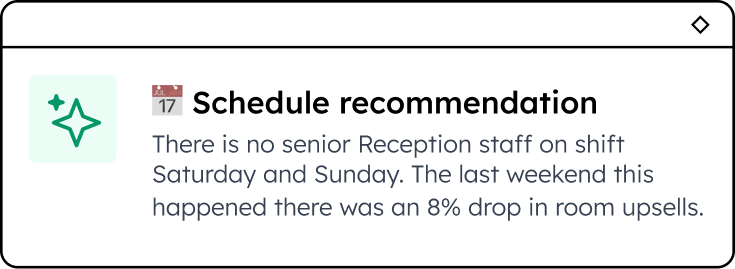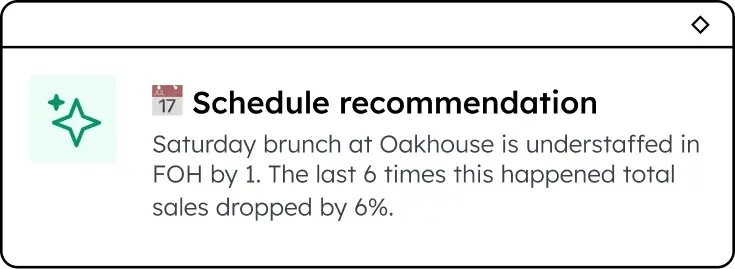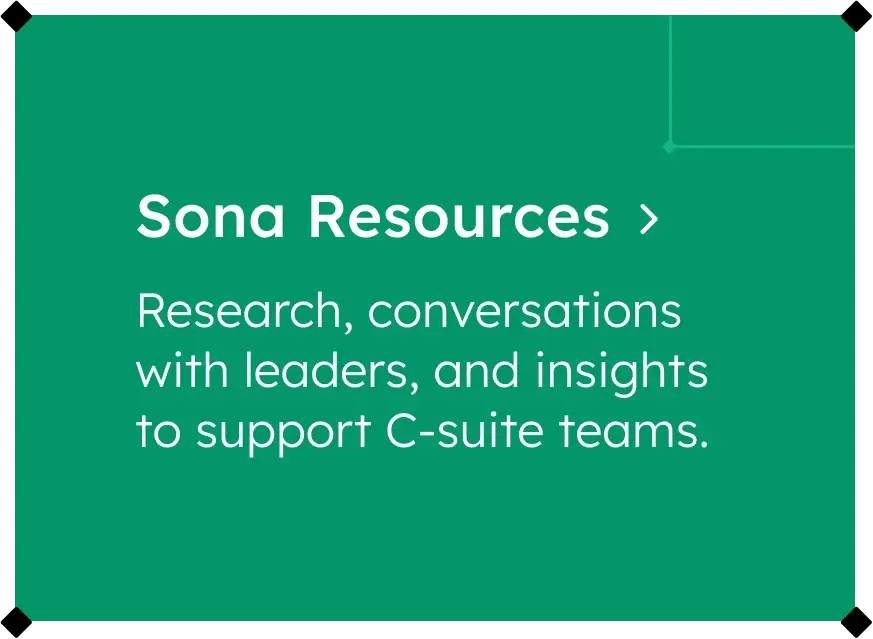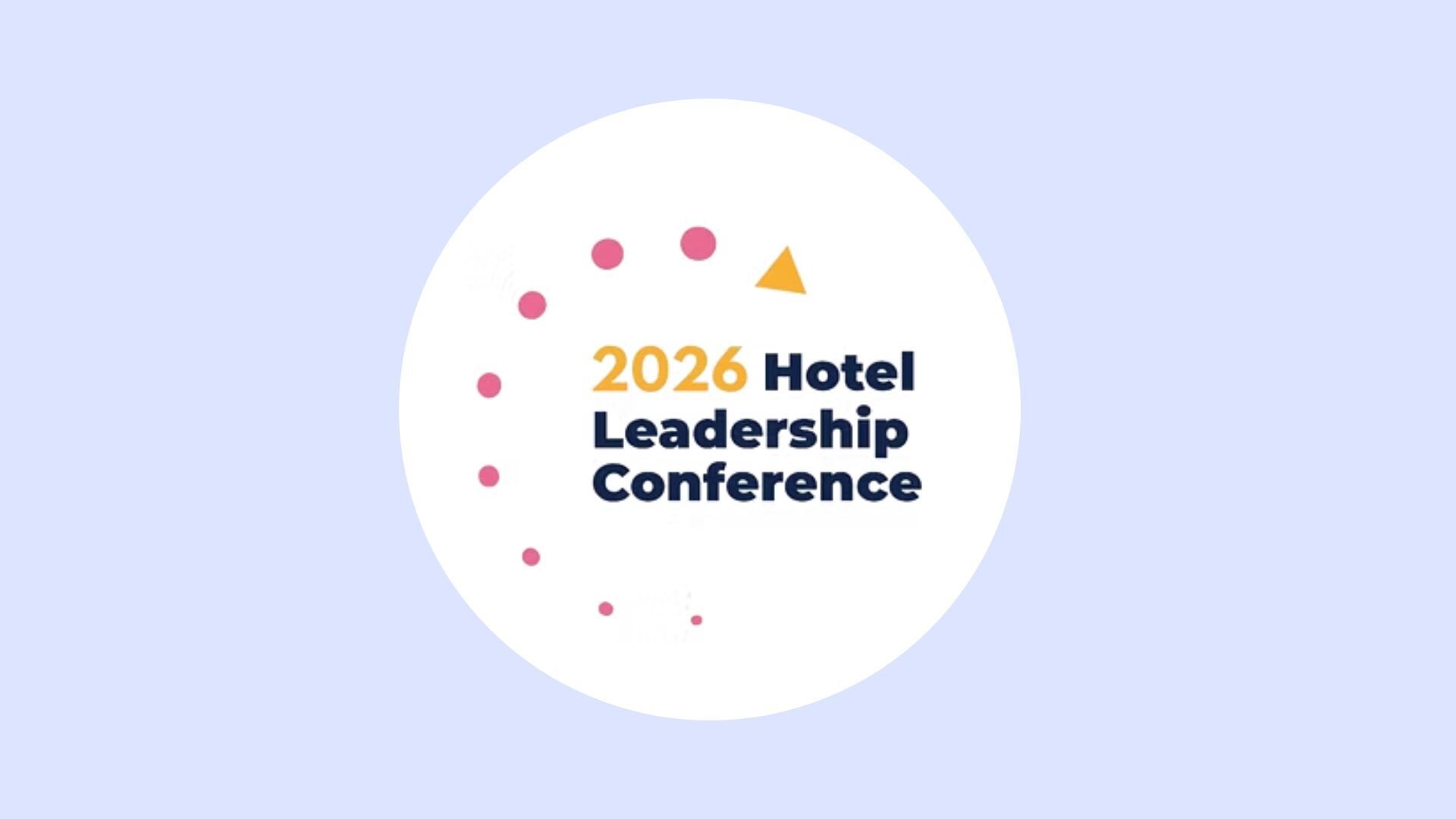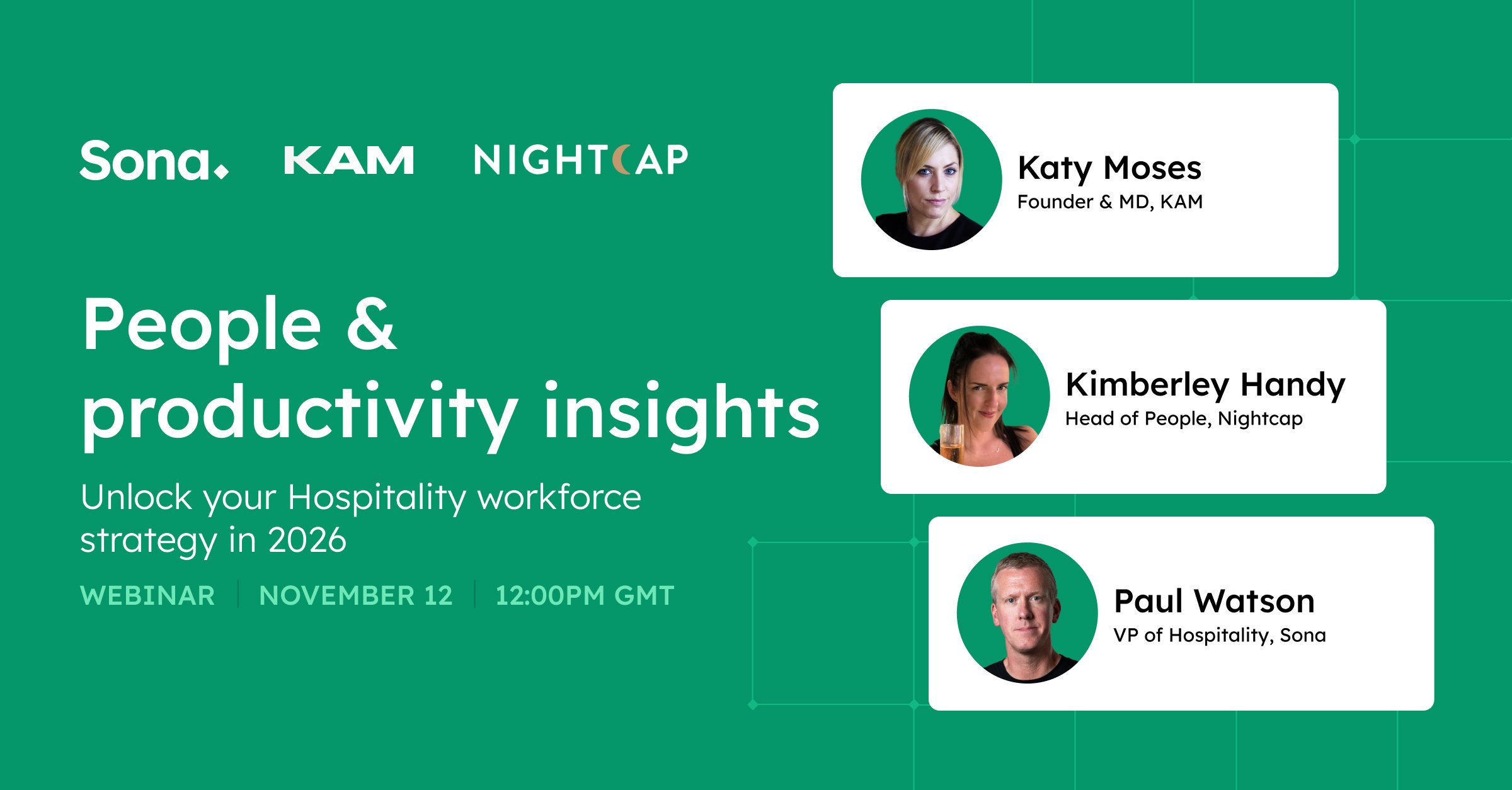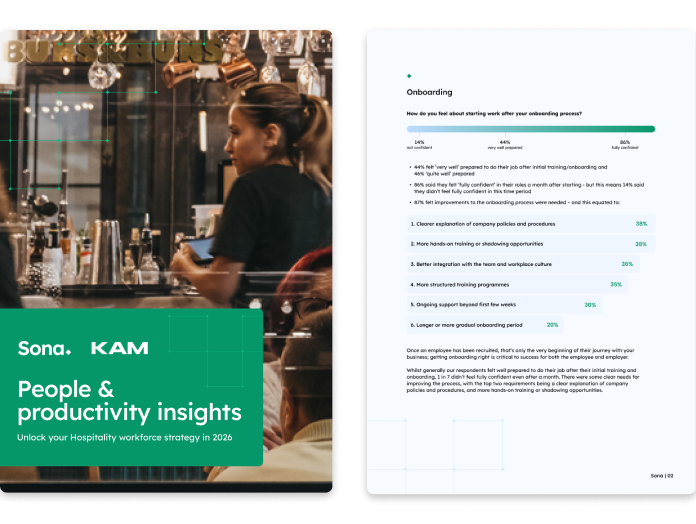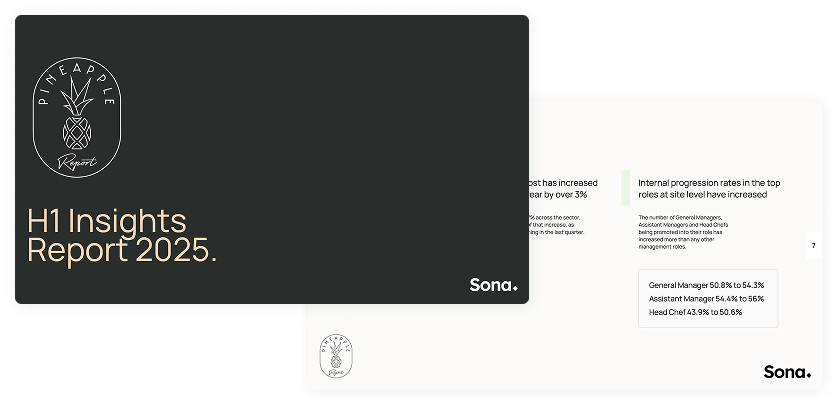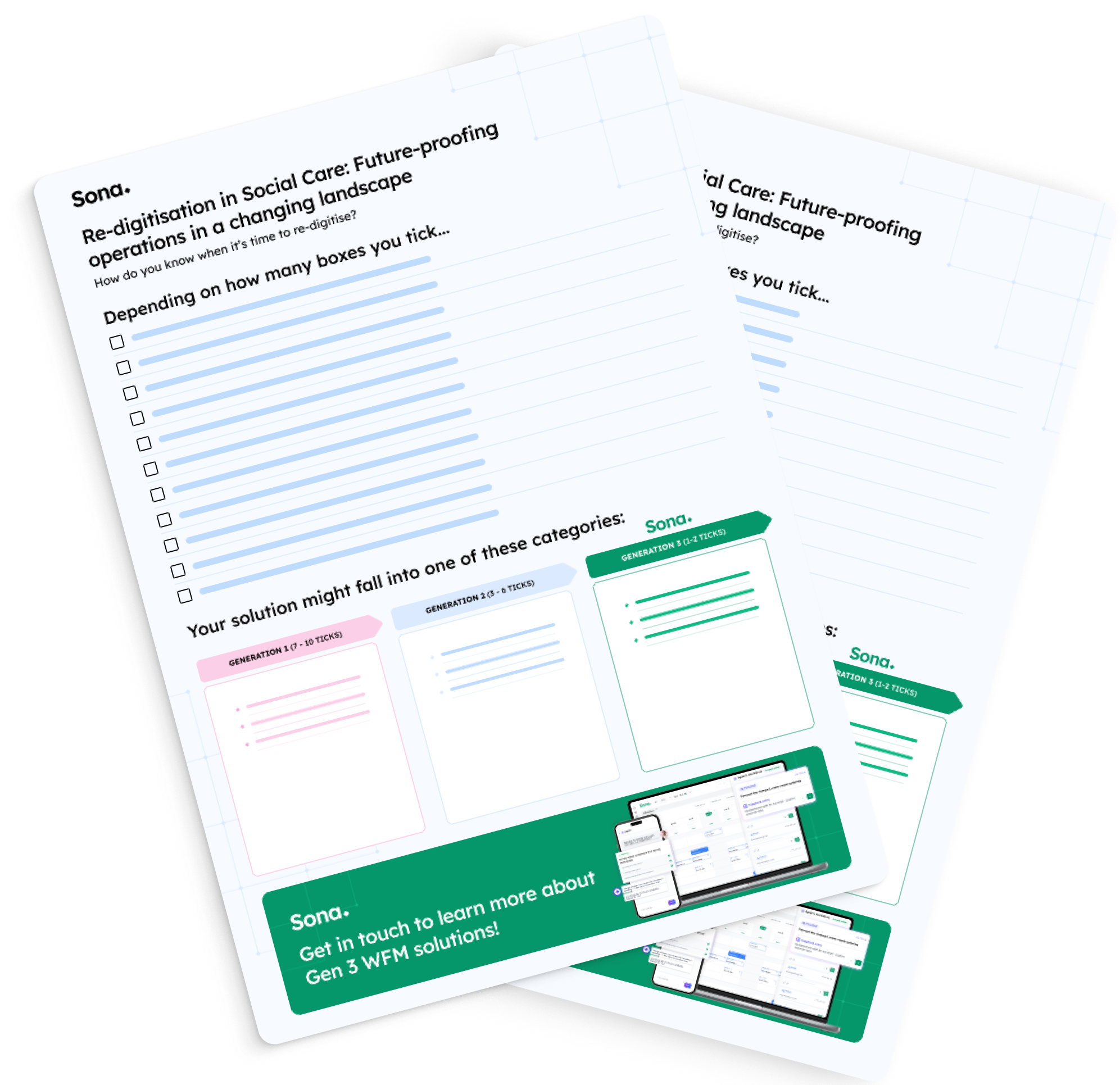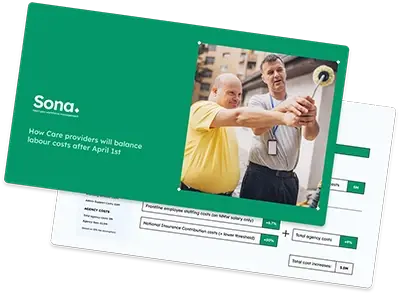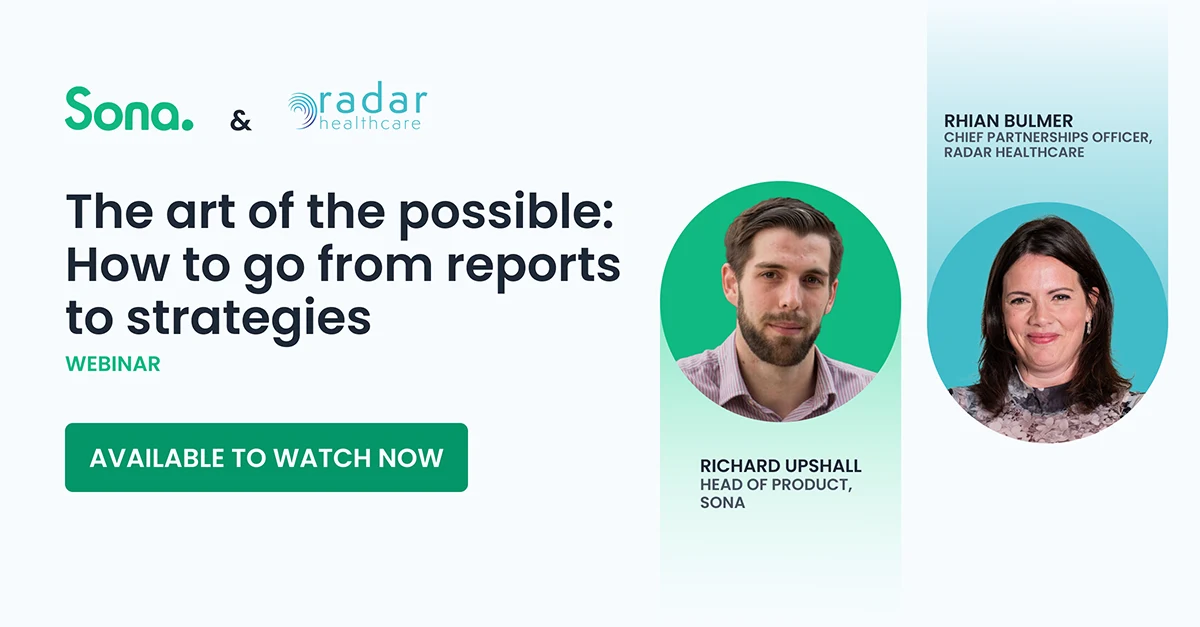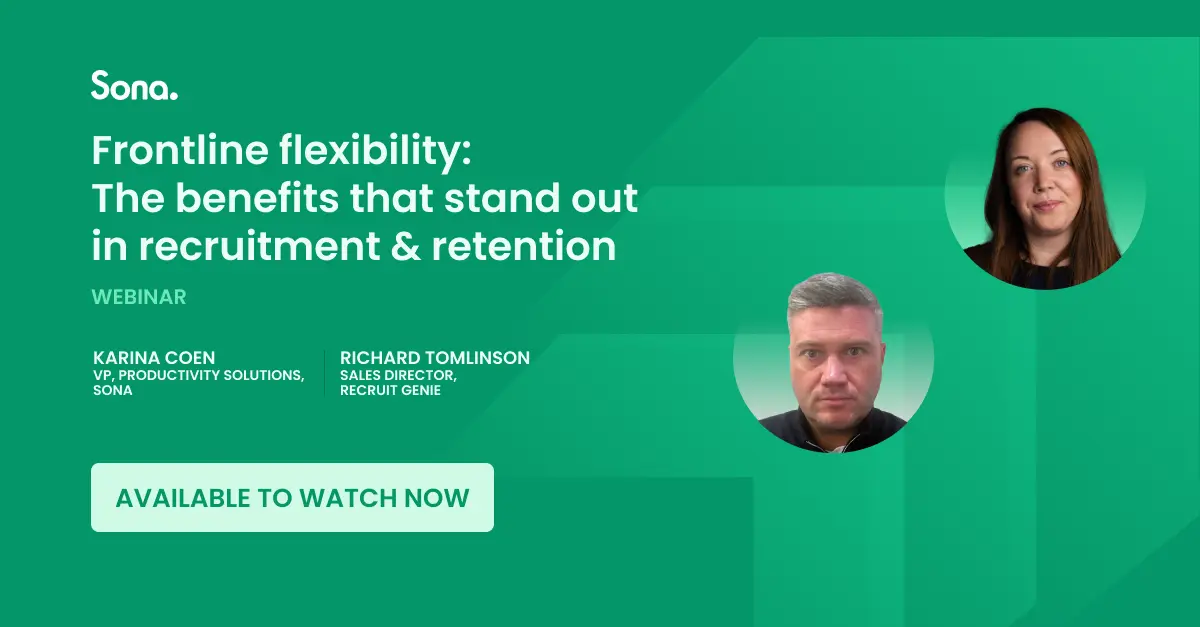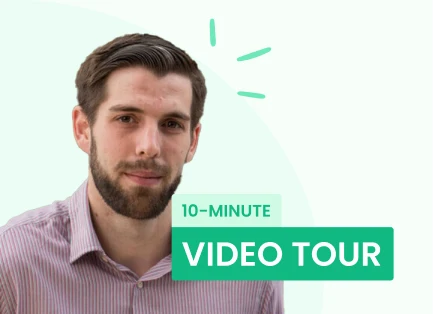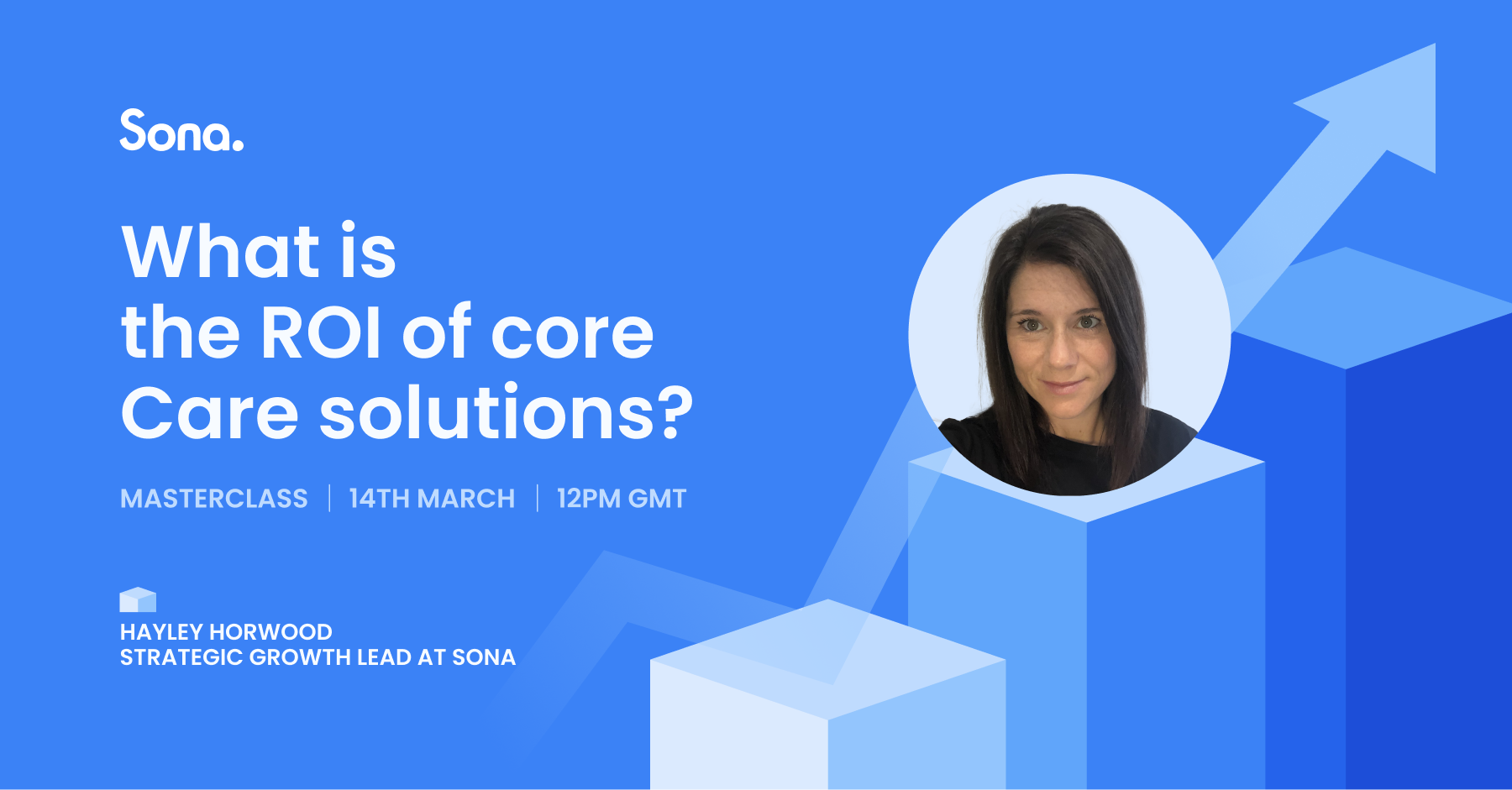Social Care, Digital Transformation
Making a digital transformation business plan for your Social Care organisation
Getting new initiatives off the ground and rolling-out digital solutions is a priority for many Care organisations this year.
10 minute read
Preparation is the key to success. Based on the many conversations we’ve had with leaders in the sector, we’ve created this guide to help you build a business case for a new solution.
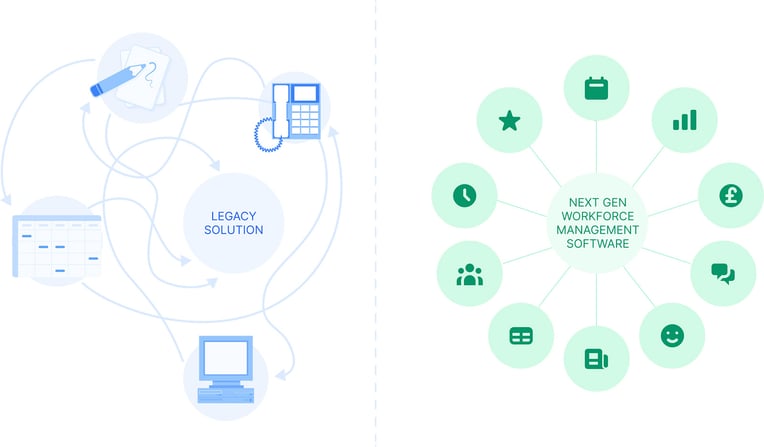
In the article below, we’re going to break down three types of management systems (pen, paper & spreadsheets, legacy software, and non-Care specific tools) and list:
- Pain-points indicating the time for a new approach
- The potential ROI of Care-specific, next generation solutions
- How to begin the transition
Moving from pen & paper and spreadsheets to next generation software
Pen & paper together with spreadsheets have sustained many Social Care organisations over the last few decades. Paired with dedicated managers and administrators, they are an accessible method to manage operations across the board.
Small providers will often fall back on paper and spreadsheets because their operations are straightforward enough to be tracked manually. But once they exceed a certain staff threshold (usually 50 - 100), the complexity of day-to-day activities increases to a degree where manual oversight can easily hinder growth and quality of care.
How do you know it’s time to move on from pen & paper and spreadsheets?
Moving on from manual operations management is essential for providers that want to offer the best care and create a frictionless environment for staff.
Oftentimes, continuing to use what is familiar may be seen as the safer option, but the reality is that the price of the pen & paper status quo almost always exceeds the initial cost of digitisation.
When an organisation experiences the following, leadership teams should consider a new solution:
- A large number of manager roles dedicated to keeping track of operations and creating rotas
- High agency usage
- Operational KPIs such as schedule visibility, retention rates, or staff costs are difficult or impossible to track
- A key person leaving the organisation can significantly impact operations as their processes are not standardised
- Cross-checking more than two sources of information (Time & Attendance sheets, holiday requests, pay rates sheets, etc.) is necessary to produce payroll
- Difficulty in evidence gathering for assessments
- Potentially unfair overtime shift distribution, as not all employees are informed at the same time
- Overstaffing and/or understaffing in individual locations
- Lower employee satisfaction scores as they are unable to see their schedule in advance, experience delays when requesting holidays, etc.
- Staff onboarding friction
- Resulting issues with recruitment & retention
Discover all the Strategic KPIs Care organisations should track!
Potential ROI of a next generation solution
As highlighted above, the costs of using paper and spreadsheets can be higher than expected - both financially and in terms of employee hours - which means there is a big opportunity for analogue providers to see significant returns on their digital investments:
- Up to 20% savings on staff costs
- Up to 60% in agency savings
- Up to 30% increased occupancy rate
- Reduction in holiday payouts
- Lower churn costs
- Lowered risk of non-compliance fines or lawsuits
- Gains can be reinvested in staff benefits, care quality, etc.
For a full list of potential benefits of next generation solutions, you can view this digitisation ROI table.
How to move on from pen & paper and spreadsheets?
The most important decision leadership teams have to make when moving on from analogue operations is which digital solution to roll-out first. The choice is generally reduced to core systems:
- Workforce Management (WFM, which include Scheduling, HR, and Payroll)
- Digital Care Planning (DCP)
- Electronic Medication Administration (eMAR)
Compliance and Incident Management, Customer Relationship Management (CRM) Learning & Development (L&D) and Applicant Tracking Systems (ATS) can also be considered but aren’t generally seen as core solutions.
Overall, each of these has benefits, but in terms of financial & operational return-on-investment adjusted for implementation time and effort, Workforce Management and CRM solutions stand out. Simply put, an organisation can directly recoup their investment costs in 3 - 6 months.
Would you like to learn more about switching from paper to a digital solution? Book a quick consultation here!
Moving from legacy systems to next generation solutions
Legacy software is a term that covers early digital solutions. Generally, these systems will have a low capability of handling complex tasks and very simple automation features.
To help with this, legacy providers will often have a number of solutions under the same brand to target different operational areas (for example, care planning, compliance, and scheduling) but these don’t always integrate with each other, or involve a lot of manual effort to move data back and forth.
How do you know it’s time to move on from a legacy system?
Legacy systems have a lot in common with analogue methods. As they are not designed to take advantage of the latest automation developments, they often lead to teams having to use a mix of software and manual workarounds. For example, a legacy system may produce a schedule, but managers still have to print it out for staff to see or send it via email/messaging app.
In addition to the pain-points listed in the previous section, an organisation experiencing the following should consider a new solution:
- Staff adoption is low because of the need for manual workarounds
- Lack of standardisation as each team might develop their own manual process
- Cross-checking more than two sources of information is still necessary
- High risk of payroll incidents
- Lack of visibility across the organisation
- Software subscription and/or maintenance costs are high, but there are no efficiency gains to compensate
- High agency usage as internal staff is not deployed efficiently
Potential ROI of a next generation solution
In addition to the benefits listed in the previous section which also apply to upgrading from a legacy system to a next generation solution, these are potential returns organisations can see:
- Efficiency savings in terms of admin hours
- Lower staff costs to due labour productivity (AI) features
- Reduced risk of payroll incidents
- Overall higher staff satisfaction scores as operations run smoothly
- Consistency of care, as next generation solutions can prioritise staff allocation
How to move on from a legacy system?
Choosing a new software can be as challenging as starting the digitisation process itself. Once again, the cost of the status quo can be easily overlooked when considering the implementation challenges a new solution can pose.
Oftentimes, legacy systems also have a reduced capacity for customer service, so organisations fear that other vendors will be the same.
However, next generation solutions are built according to different principles, namely user-centric design and collaboration for a true end-to-end experience. With easy-to-use interfaces, open APIs to facilitate integrations, and customer success teams that ensure successful roll-outs, the right solution can bring benefits that far outweigh the risk of change.
Listen to our “From purchase to roll-out: How to prevent implementation pitfalls” webinar to learn how to tell the quality of a provider’s post-implementation support.
Moving from non-Care specific software to solutions designed for Care
Most industries now require operational software, hence the wide range available on the market. This being said, Social Care has a series of unique characteristics that generic tools might struggle with, including:
- Complex shift patterns
- Complex pay rates
- Need to reduce agency usage and prioritise internal staff
- Consistency of care requirements
- Multiple staff assigned to the same resident
- Staff skills requirements
- High number of staff with varied work restrictions (students, visa employees, etc.)
These are not requirements shared by many other sectors, so generic software providers are not incentivised to work on developing features to accommodate them.
How do you know it’s time to move on from non-Care specific software?
Forcing a generic software to work with above requirements usually leads to manual workarounds and similar issues to legacy systems - mainly increased staff and operational costs without any efficiency gains.
Additionally, organisations that find themselves struggling with the following as well should consider a new solution:
- Few if any integrations for other Care specific vendors such as Digital Care Planning or eMAR
- Poor visibility of the schedule per staff member and per supported person
- Low ease-of-use as interfaces are not designed for Care processes (e.g. lack of a “drag and drop” scheduling feature)
Potential ROI of a Care-specific next generation solution
Organisations moving on from non-Care specific systems will see many of the benefits those moving from legacy providers see as well. Additionally, Care-specific next generation solutions can bring:
- A partner that understands the sector and works to solve its challenges
- A singular, dynamic digital ecosystem that maximises efficiency
- Strong integrations with other Care-specific vendors
- Ability to manage large, complex organisations
- Higher staff satisfaction scores thanks to operational precision
How to move on from non-Care specific software?
A vendor who designs solution specifically for Care can be recognised through their:
- Commitment to hiring or consulting Care experts for product development
- Sector research and resources
- Partnerships with other Care vendors
- Championing sector-wide improvements (e.g. supporting employee wellbeing, working with charities, etc.)
Moving on from non-Care specific vendors should be a straightforward process, as the data structure and digital approach is already there. Additionally, this change can be motivating for staff, as they will feel like they're transitioning to a platform designed with their needs in mind.
Overall, growing organisations need high impact solutions. Understanding the financial and operational return-on-investment can make the decision process easier, while being able to communicate these benefits will ensure higher staff buy-in.
If you found this article interesting, register here for a 30-minute live Masterclass with Care expert Hayley Horwood where she will explore the ROI of each type of Care solution, then take questions from the audience.
Enjoyed this article? Let's stay in touch 👋
If you liked this article, why not subscribe to our newsletter to get the latest news and views delivered straight to your inbox?

